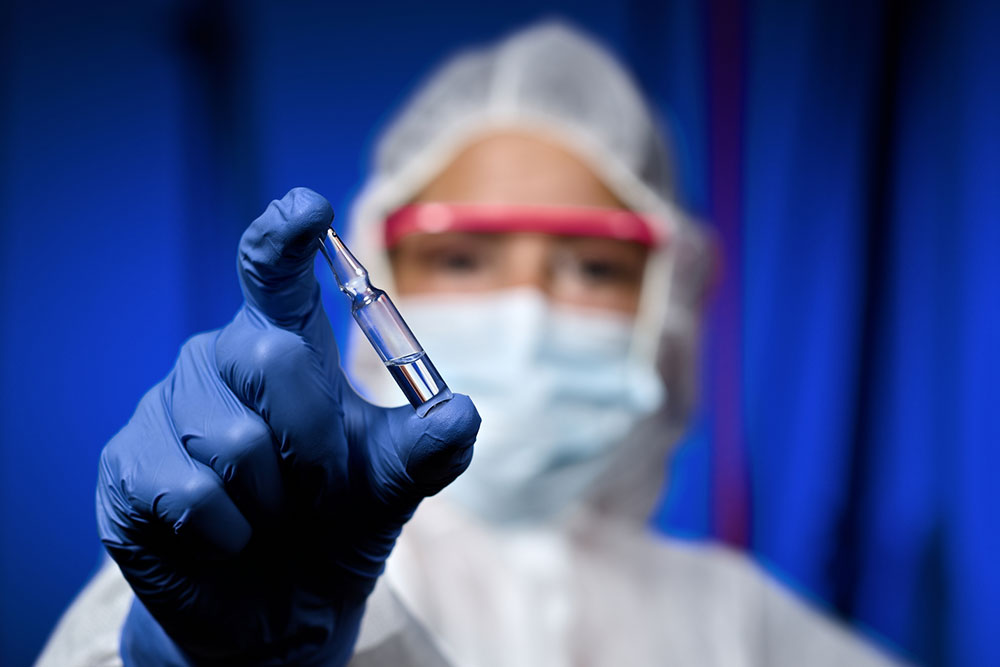Novavax vaccine – Development, safety, and usage for 12-17 age group

The Novavax COVID-19 vaccine, known as NVX-CoV2373, has gained prominence for its usefulness and safety. Originally authorized for adults aged 18 and over, it recently received FDA approval for emergency use in adolescents between 12 and 17. This vaccine defends against COVID-19 with an innovative protein-based technology. An expansion of usage means a broader age group can benefit from the protection, bolstering efforts to curb the pandemic’s spread and keep younger populations safe.
Additional approval from FDA
The FDA granted the Novavax COVID-19 emergency use authorization for adolescents aged 12 to 17, endorsing it as a two-dose primary series. Additionally, the CDC director issued a decision memo permitting the use of the Novavax COVID vaccine as a primary series choice for this adolescent group. The availability of a vaccine option designed using conventional protein-based technology is seen as a benefit. Experts believe the vaccination rates may rise, especially since children are back to school and socializing.
In related news, Novavax also worked on actively developing an updated version of its vaccine, tailored to target a specific variant of the virus and its offshoots. The company was looking forward to seeking authorization for this variant-targeting vaccine last year.
Development and safety of the vaccine
The development and safety of the Novavax COVID-19 vaccine for adolescents aged 12 to 17 have been carefully scrutinized and confirmed through comprehensive clinical trials. Novavax initially secured emergency use authorization for its vaccine in adults. Subsequently, the company conducted extensive research, including clinical trials involving adolescents, to assess the vaccine’s safety and efficacy within this age group.
The safety evaluation process of the Novavax vaccine in adolescents is meticulous. It involves monitoring potential side effects and adverse reactions. The data from these trials are subjected to rigorous analysis and scrutiny to ensure the vaccine meets stringent safety standards.
The expansion of the vaccine’s authorization to include adolescents reflects the confidence of regulatory agencies and healthcare authorities in its safety profile for this age group. This development underscores the commitment to providing a safe and valuable solution to protect younger individuals against COVID-19.
It’s essential to note that vaccine safety monitoring is an ongoing process even after authorization. This ensures any potential adverse events are promptly identified and assessed, contributing to the continuous improvement of vaccine safety.
The vaccine’s usefulness
Several factors play a crucial role in determining the effectiveness of a vaccine. Here are the critical factors in the case of Novavax:
- Innovative technology
Novavax’s vaccine relies on a novel approach known as protein subunit technology. It involves the creation of a nanoparticle that mimics the spike protein found on the surface of the SARS-CoV-2 virus, which causes COVID-19. This approach stimulates a robust immune response without using the live virus, making it safer. - Strong immune response
The vaccine prompts the immune system to recognize and develop antibodies against the spike protein. In other words, if a vaccinated individual encounters the actual virus, their immune system is primed and ready to defend against it, reducing the risk of infection. - Efficacy
Clinical trials have shown that the Novavax vaccine has a high level of effectiveness in preventing COVID-19. Studies have demonstrated an efficacy rate of around 90%, which means it could reduce the risk of illness among those who receive it. - Protection against variants
The Novavax vaccine has shown to be useful against various SARS-CoV-2 variants, including some of the more concerning strains. This adaptability is crucial in a pandemic where the virus can change and produce new variants. - Favorable safety profile
The vaccine has a favorable safety profile, with side effects generally being mild and transient, such as pain at the administration site, fatigue, or headache. These side effects are similar to those observed with other COVID-19 vaccines. - Accessible storage
Novavax’s vaccine can be stored and transported at standard refrigerator temperatures, simplifying logistics and making it more accessible, especially in regions with limited cold storage infrastructure.
Different from other vaccines
The Novavax COVID-19 vaccine, NVX-CoV2373, distinguishes itself from other vaccines through its unique technology and characteristics:
- Technology
Novavax’s vaccine employs protein subunit technology. It utilizes a protein nanoparticle that mimics the spike protein of the SARS-CoV-2 virus, prompting an immune response. This differs from mRNA vaccines, which use genetic material to instruct cells to produce a part of the spike protein. - Traditional approach
Unlike the mRNA vaccines that represent a newer approach to vaccination, Novavax’s technology is based on more traditional methods used in vaccine development. This may appeal to individuals who prefer vaccines with well-established track records. - Efficacy
Novavax’s vaccine has demonstrated high efficacy, with clinical trials showing an effectiveness rate of approximately 90%. This is comparable to, or in some cases higher than, the efficacy rates of other authorized COVID-19 vaccines. - Storage and distribution
A notable advantage of the Novavax vaccine is its ease of storage and distribution. It can be stored at standard refrigerator temperatures, simplifying logistics and making it suitable for regions with limited cold storage infrastructure. - Broad applicability
Novavax’s vaccine has shown to be useful against various SARS-CoV-2 variants, including some of the more concerning strains. This adaptability is crucial in addressing the evolving landscape of the pandemic. - Global impact
Novavax’s vaccine has the potential to make a significant global impact. Its accessibility and the fact that it can be produced in large quantities make it a valuable tool in the global effort to combat the virus and some of its variants.
Like all COVID-19 vaccines, breakthrough cases persist, where vaccinated individuals contract COVID-19. Experts emphasize that the virus’s transmission among vaccinated individuals will continue. However, the pivotal role of vaccines lies in diminishing hospitalizations and fatalities. The primary benefit is expected to manifest in alleviating the strain on healthcare facilities and ultimately safeguarding more lives over the long term.
Individuals should consult a professional healthcare provider for advice regarding vaccination and treatment. They can examine the patient and suggest the best solution for any health condition.
References :
1. https://www.ama-assn.org/delivering-care/public-health/fda-authorizes-novavax-vaccine-kids-ages-12-17-andrea-garcia-jd-mph
2. https://www.yalemedicine.org/news/novavax-covid-vaccine
3. https://www.aha.org/news/headline/2022-08-22-fda-expands-novavax-eua-include-children-12-and-older
4. https://www.who.int/news-room/feature-stories/detail/the-novavax-vaccine-against-covid-19-what-you-need-to-know
5. https://www.yalemedicine.org/news/covid-19-vaccine-comparison


